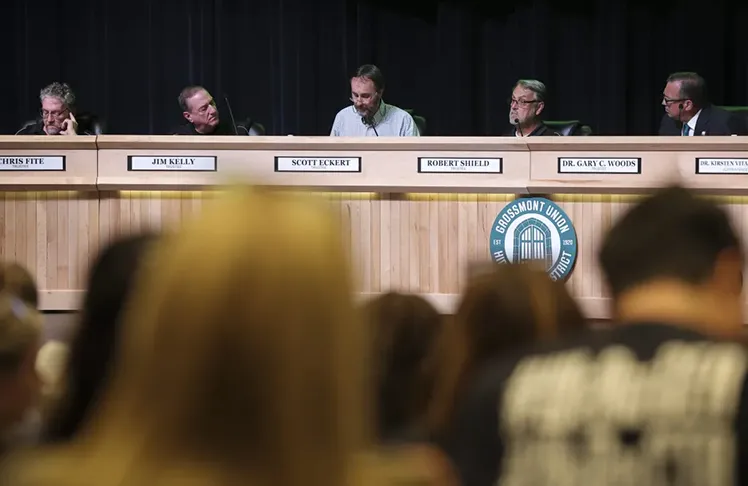
School boards decide what kids get taught, how money is spent, and who gets hired to run a district. But a majority of the board members making those decisions don’t look like Black America.
Indeed, a new study from The Thomas Fordham Institute, a conservative education think tank, finds the share of Black Americans who sit on their local school board has been cut in half, dropping from 8% in 2001 to 4% in 2023. Meanwhile, the proportion of white Americans, long the majority of school board members, remains virtually unchanged — going from 86% to 87% in the same time span.
That disparity isn’t just about optics. This study comes as school boards across the country are being put in the national spotlight over hot-button issues such as votes on Critical Race Theory and book bans.
The study’s “findings reveal fundamental tensions at the heart of school governance, and they suggest that the nation’s most local form of democracy may, in important ways, be drifting out of step with its citizens,” according to the report.
Do school board members represent their students?
The study found school board members are not only whiter, but also wealthier and more college-educated than the general population. Ultimately, representation is about whether board members understand the needs of the students and families they serve.
A Black school board member, for example, might be less likely to approve the adoption of a textbook that calls enslaved Africans immigrant workers. They might not agree to a ban on a film about Ruby Bridges, and maybe they wouldn’t greenlight a dress code that bans dreadlocks, either. But the researchers also found that school board members tend to be more critical of charter schools than the average Black parent.
Just how white are school boards?
On paper, school boards are far whiter than the country itself — 87% white compared to 59% of the U.S. population. But this gap is misleading, according to the researchers. A large chunk of school board members represent small, rural white communities, skewing the results.
When researchers adjusted for the number of students each board member actually served, the racial gap between board members and the U.S. public shrank slightly. With the adjustments, white people make up 77% of school boards, while Black people make up 9%.
Do the views of school board members match the average Black American’s?
The Fordham Institute’s study found that school board members are less likely to hold views similar to those of the average Black American.
A 2022 article by Mother Jones on how white supremacy drives decision-making on school boards pointed out that “disgruntled white people band together on a school board or committee to erase unwanted Black people, texts, and consciousness.”
The Black folks in the study might agree. When asked to grade the quality of their local public schools, only 43% of Black Americans gave their school an A or B, compared to 67% of school board members who gave those grades.
Nearly 65% of Black Americans also believe there is “too little” emphasis on teaching about racism in schools, compared to 45% of school board members.



